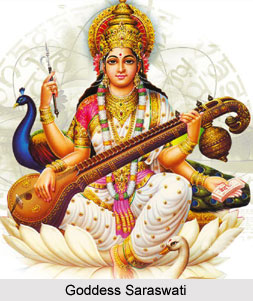When Parvati (the creator of the universe) came to know of this, she got so angry that she threatened to destroy the whole creation and create one anew. The different gods tried to pacify her but she wasn't willing to relent unless her son (Ganesha) was given back to her. Shiva then promised to bring her son back to life and went in search of a new head. He found a cow-elephant weeping at her infant's dead body. Shiva convinced the she-elephant that she would see her infant come to life again and took the dead baby elephant's head and fixed it to that of Ganesha's lifeless body. This way Ganesha was (re) born.
Shiva then blessed Ganesha and declared him superior to all other gods except Vishnu, Lakshmi, Parvati and himself. He declared that Ganesha will always be worshipped before all others, whenever anyone carries out any task, travel or puja. This is the reason Lord Ganesha is considered auspicious and is the first god to be worshipped at all times. You will find pictures or statues of Ganesha near the entrance of a house, either outside or inside, to ensure people get to see his image before leaving the house.
It all starts with the making of the idol. Just two or three months before Ganesh Chaturthi, you will find artisans all over India busy making idols of Ganesha. These idols vary in colors, shapes and sizes, from an inch to about sixty or seventy feet. They are decorated with various other accessories.
No... sandalwood paste is only for goddess Parvati, we humans use other materials. When we were young, they were made with mud. But over a period of time, as with everything else, this has also been commercialized and non-biodegradable materials like Plaster of Paris are used instead of mud. But it gives me great pleasure that with the increasing environmental concern and awareness, the original "mud" idol is making a comeback, as more and more people shun artificial materials.
The smaller idols are used for the puja at home, while the bigger ones are erected in public places. Temporary structures called pandals (stages) are created in every locality, where a huge majestic statue of Lord Ganesha is installed before the day of the festival. They are decorated with flowers, lights and the frills.
On the day of the festival, people perform pujas (prayers) at home as well as at all the places the idols are erected. It is considered a bad omen to erect an idol and not perform puja. Throughout the ceremony, hymns are chanted from the Rig Veda and other ancient Hindu scriptures, as the first reference to Ganesha is said to have been made in Rig Veda.
After ten days of festivities, it is time to bid farewell to Lord Ganesha on the 11th day. All the idols are taken out through the streets of the localities in processions. These processions can be as huge as marriage processions with a few thousand people or as small as just two or three people. The processions are accompanied with dancing, singing, and fanfare and the statues are taken to a water body nearby where they are then immersed.




















